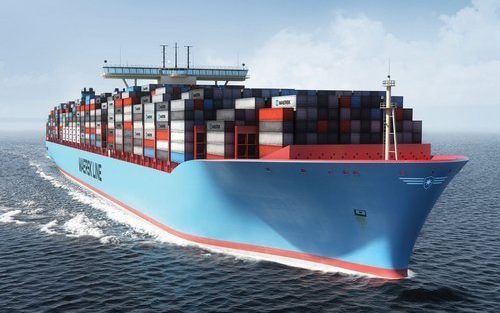Trading places

It was only a matter of time before Maersk EEE would lose its crown as “the biggest” container ship. Orders by China Shipping Container Lines and United Arab Shipping Co in the past couple of months have added at least an extra 400 teu over the Maersk record breakers.
The race to build megaships is making ports follow suit. Mega-cranes and mega-yards are sure to follow. Is this race to “mega” sizes really justified by economic developments and trade trends? It is an important question, because supersizing vessels and ports requires tremendous amounts of money and given the length of time to construct each one it’s a very high bet on a distant future.
The case of both the lines and the ports hinges on the fact that not all of their competitors will be able to sustain that level of investment, thus providing them with the long term competitive advantage. But their real bet is that the historical cycles of trade will be consistently repeated into the future. In that “post-great depression” scenario, the recovery would favour nations connected by the established East-West trade links and support the trend to mega-sizing the ships and ports.
Intriguingly, an alternative scenario could play out. As the economics of production change in the East and the economics of buying change in the West, the recovery might not favour only the East-West trade, but spread unevenly over narrower markets. For example, a more diffused intra-Asia and increasing South-South trading focus could replace the massive East-West flows and change the dynamics for both shippers and ports. Of those possible new massive trade lanes, the most intriguing will be the influence of trade volumes between China and Africa.
Over the last ten years, trade between Africa and China grew from $15bn to about $200bn today and has a potential to grow 30-40% year-over-year. If this trade maintains the current pace of growth, then a few things may happen. If this growth trend accelerates further, carriers’ network planners need to consider new patterns of lanes and stops shifting from the northeast China ports to the south China ports, and the transhipment strategy changing from Singapore and Malaysia to Colombo and the Gulf. The fast rail connection linking central and south China to Laos could enable larger container flows feeding Myanmar ports in Thilawa, and maybe breathe new life into the container port of Dawei, neither currently considered by major lines. Shifts in volumes to ports which did not invest in handling mega-ships could favour carriers with smaller vessels near that magical number of 7,000 teu and change the economics of many rotations. This would nicely match the Asia-Africa trade, as there is hardly any African port capable of handling massive ships. The constraints are not limited to the lack of appropriate shore equipment and shallow drafts, but also the technical know-how of the workforce.
Even if the ports invested in handling megaships, another problem would be just outside of their gates. Africa lacks efficient, high volume transportation corridors to move goods inland. Configuration of roads and railways make it virtually impossible to serve large swaths of land from a few massive mega-ports. Still, the rapid growth of Asia-Africa trade could provide an opportunity for the creation of new, highly efficient and cost-effective ports integrating gateway and trans-shipment services. A closer look at the East Africa shows such an opportunity.
Dar es Salaam and Mombassa are currently struggling with upgrades to the terminals and insufficient logistics infrastructure outside the port gates. The extension of the rail line between Angola and Zambia all the way to Dar es Salaam could of course strengthen the power of the existing port, but it could also spur development of new terminals outside of Dar es Salaam. Further development of East Africa –West Africa rail connections could diminish the significance of the existing logistics chains running between Durban and the rest of Africa.
These developments could represent an opportunity for direct investments from China and expansion of the Asia-Africa trade. In that context, adding a pearl or two to the string of Chinese container port investments could have a great effect on future investments in the shipping fleets and fleet profitability. Yet another argument for carrier’s network economists and planners to review their strategies for developing fleets and trade lanes.
